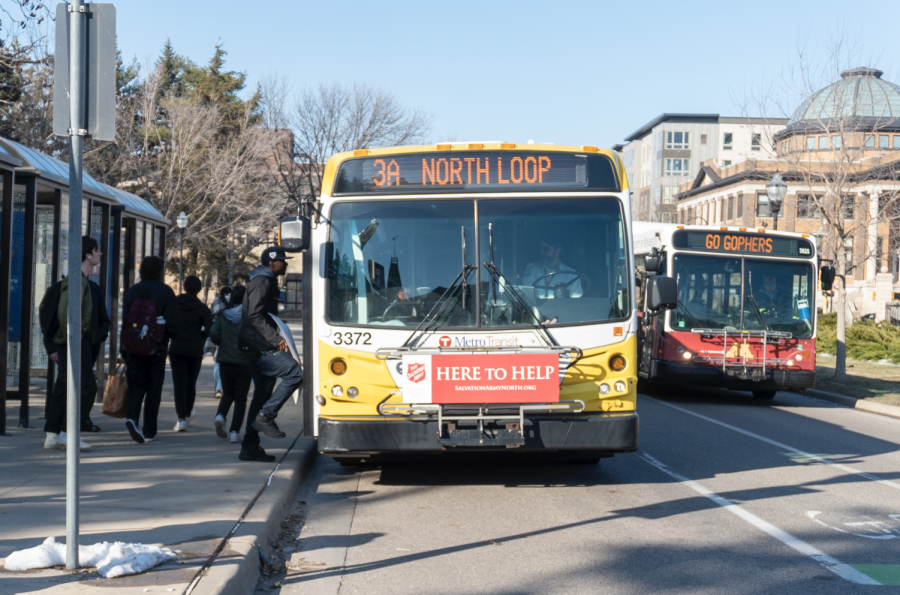Smoke, first responders and volunteers faking injuries will fill Stadium Village early on Tuesday, March 18, during a Light Rail Transit derailment simulation, while many University of Minnesota students are away on spring break.
The University, Metro Transit and other public safety groups are coordinating the drill as a warm-up for responding to disaster on the Green Line after it opens June 14.
As officials prepare to try their hand at confronting a derailment emergency, other Green Line testing is picking up speed.
Trains will continue to run along the rail line more often as opening day approaches, said Metro Transit spokesman John Siqveland.
As testing becomes more frequent, he said students should be wary of the tracks.
“Any time is train time,” Siqveland said. “Be very, very aware of safety around the rail line.”
But most students won’t even be on campus during Tuesday’s emergency simulation.
Organizers scheduled the exercise over the University’s spring break to minimize its impact on students, traffic and the surrounding community, University spokesman Chuck Tombarge said.
Performing the test near campus was appealing because the Green Line will benefit the University community, Tombarge said, but also because the community will need to be extra prepared as the light rail is added to the area’s mix of bustling car, bicycle and foot traffic.
Responding to a light-rail emergency is different from tackling a car or bicycle crisis, Tombarge said, so Tuesday’s simulation will give University police an opportunity to learn through experience.
To provide space for an onsite command center and other equipment during the drill, the Minnesota and Victory parking lots near TCF Bank Stadium won’t be open Tuesday, and University bus stops on 23rd Avenue Southeast will also close, University Parking and Transportation Services spokeswoman Jacqueline Brudlos said.
The actual content of the simulation isn’t set in stone, said Metro Transit police captain Jim Franklin. But Tombarge said organizers are withholding some details to maintain an element of surprise for the participating responders.
During the drill, a bus will serve as a train car that derailed during a simulated explosion, Siqveland said. Franklin helped write the sequence of events for the exercise. On Tuesday, he’ll help decide how to deploy teams of firefighters and police and even contribute to any changes that organizers make based on what happens.
“There’s kind of some real-time movement,” Franklin said.
The federal government often requires emergency-preparedness exercises like these, Siqveland said, adding that they’re important because they help foster relationships between the many agencies that respond in dire situations.
Just after the drill, participants will debrief in a “hot wash,” Tombarge said, where they discuss what went well and what could be improved in the future.
“We expect that this will both give us practice but also some lessons to learn,” he said.
To ensure that the public is aware of the event and knows it won’t actually be an emergency, Tombarge said, the University posted a press release Tuesday, described the simulation in a University-wide public safety email and will use social media to spread the word.
Franklin said extensive preparation goes into making the exercise a realistic experience for the safety responders involved.
More than 100 people, including volunteers from technical colleges, will pretend to be injured during the event, he said. They’ll sport real-looking injuries made with makeup while playing specific roles, like a parent searching for their missing child.
“It’s a very scripted and choreographed event,” he said.
The project is essential for building relationships among the departments involved, he said.
“We all know each other now,” he said. “You don’t want to meet your public safety partner for the first time during an incident.”
















